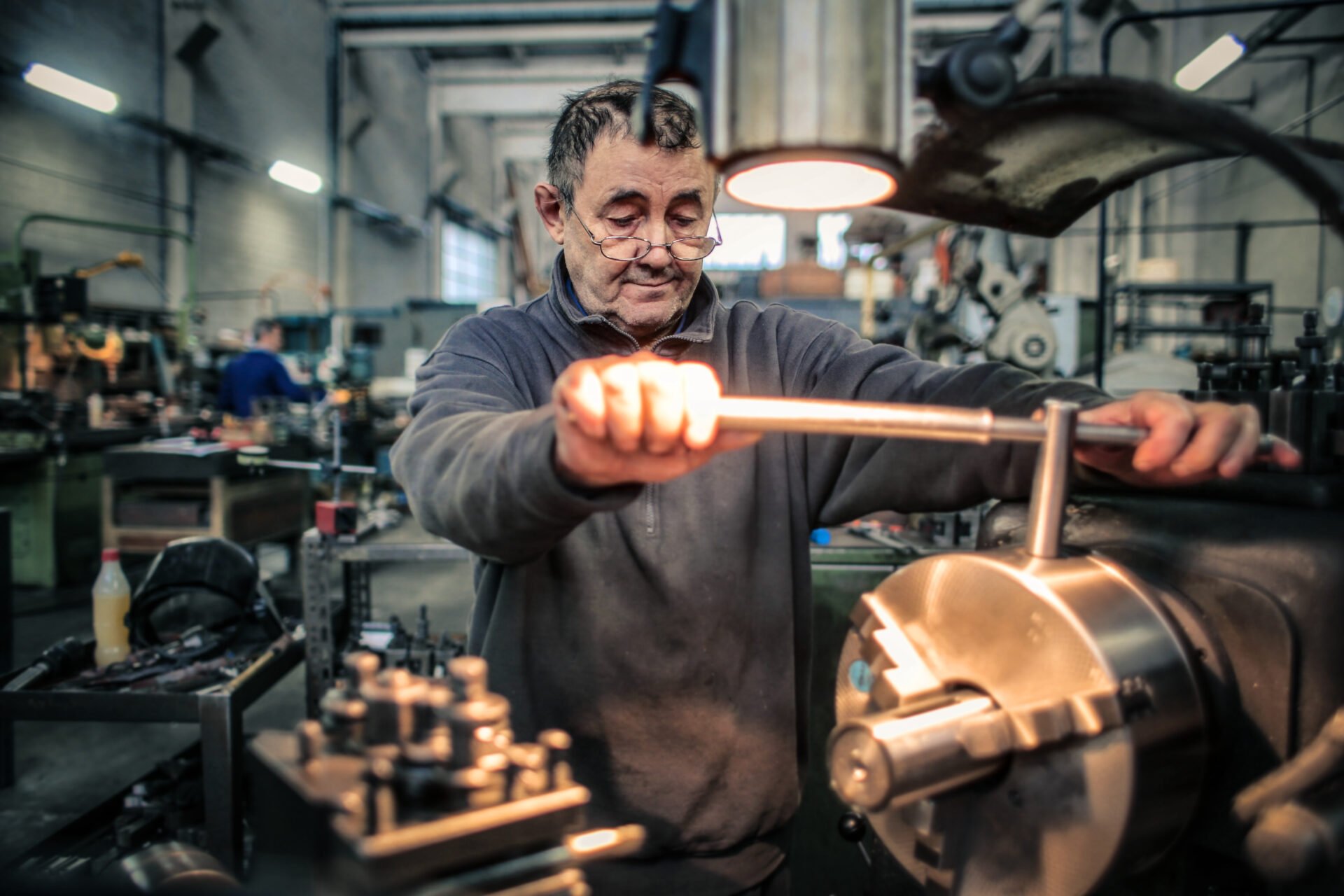Effect of AI in Traditional Industries
From manufacturing, to farming and food production, AI can inspire great possibilities for optimising traditional industries....

AI in traditional industries shouldn’t be a surprise. From manufacturing to farming and food production, Artificial Intelligence can bring improvement!
In this article, we will highlight some of the most interesting, significant, and consequential applications of AI in traditional industries.
Government & Public Sector
The use of AI in the government and public sector varies significantly by nation. This is largely due to the advancement of technology in each country.
For example, given that homegrown universities and companies in the US are in the business of technology and AI, they are more likely to use it. But of the countries that manage to use AI, the use cases are both interesting and powerful.
Social Welfare
One of the most powerful use cases of AI for social welfare is the analysis of fraudulent benefits claims. According to Statista, in 2020, payment card fraud losses per 100 U.S. dollars of total sales is at 6.8 cents.
As well as this, fraud losses reached their peak in 2016 at 7.2 cents per 100 U.S. dollars of sales. Cents-wise it may not sound like much, but that is every card payment, of every person in the US. In the end, it amounts to a significant loss.
AI is able to tackle this problem by taking advantage of large data sets. For fraud detection, interpreting a large dataset is crucial as larger datasets provide better insights into customer preferences and behaviour, as well as fraud trends. As such, AI/ML models can help companies distinguish fraud from regular transactions.
Transportation
Fully-automated vehicles on all public roads remains a fantasy of the future. However, with the application of AI, fully-automated vehicles in predictable environments is a possibility.
The potential for AI-powered autonomous cars is substantial in urban environments, especially in city centres and suburban neighbourhoods. These cars may be configured to follow instructed routes while travelling at safer speeds, usually less than 50 km/h. This regulated speed and consistent route planning greatly lower the dangers involved with self-driving cars in more intricate urban settings.
Furthermore, autonomous cars are very helpful for last-mile delivery services in suburban and urban locations. They may be configured to transport packages via routes that are optimised, cutting down on delivery times and boosting productivity. This application helps to lessen pollution and traffic jams in highly populated regions in addition to streamlining the delivery procedure.
Administrative Work
Ask any employee in the public sector what bugs them about their job, and it won’t take long before they cite the paperwork. Now, with the use of AI, these troublesome tasks can be made easier.
Computer vision coupled with a machine learning model has the potential to automate documentation, which includes the extraction of data from invoices, architectural drawings, certificates, charts, drawings, forms, legal documents, and even letters. Additionally, natural language processing and natural language generation can be used to draft documents and announcements. This is an ability already used by some newsrooms in the US.
Manufacturing & Construction
Unfortunately, when people think about AI, they rarely consider its application in manufacturing, let alone construction. This makes sense considering the sector has resisted technological disruption for years.
Fortunately, these industries are becoming less resistant to technology innovation over time. This is in part because new digital tools are emerging that show real benefits.
A great example of this technical change is Building Information Modelling (BIM). Its expanding ubiquity—73% of construction companies already use it—illustrates a rising willingness to embrace digital solutions. Building Information Modelling (BIM) has completely changed the way buildings are planned, built, and maintained. It has made construction projects more interconnected and collaborative.
This transition is being accelerated further by the incorporation of AI in the building industry. AI systems are able to evaluate BIM data in order to improve construction scheduling, anticipate possible problems, and recommend more effective building techniques. AI is now being used in construction for tasks that are done on-site as well as in design and planning.
Predictive Maintenance
Manufacturers leverage AI to identify potential accidents through the analysis of the sensor data. The AI systems help them forecast the lifespan of an equipment, so they can predict when it might fail and plan maintenance and repair accordingly.
Moreover, manufacturers also use edge analytics, a method of analysis of the non-central components, such as sensors, switches and various connected devices. In doing so, they can improve quality, yield, and track worker health.
Generative Design
Generative design utilises machine learning to essentially mimic an engineer’s approach to design. Designers or engineers enter parameters of a design: materials, size, weight, strength, manufacturing methods, and cost constraints into a generative design software.
Furthermore, the software then generates a rendering of all possible outcomes from the given parameters. In this way, manufacturers are able to quickly create thousands of design options for one product.
Process Optimisation
Manufacturers can take advantage of AI-powered process mining tools to identify and eliminate the different bottlenecks in the chain of production. For example, one of the most important things in manufacturing is keeping the accuracy and timing of a delivery intact.
As well as this, beyond locating bottlenecks and guaranteeing delivery accuracy, AI-powered process mining tools may be used to achieve greater manufacturing optimisation as a whole. These instruments have the potential to greatly improve industrial processes’ overall efficiency. For example, they can foresee possible production delays or interruptions by analysing large volumes of data, which enables firms to take proactive measures to solve these issues before they worsen.
Moreover, resource allocation may be optimised by AI-driven process mining. These technologies can suggest the most productive and waste-free use of labour and supplies by examining trends in production data. This is especially helpful in complex manufacturing environments when several goods are being produced at once.
However, if the company has several factories in different regions, building a consistent delivery system is difficult. However, with a process mining tool, manufacturers can compare the performance of different regions down to individual process steps: duration, cost, and the person performing the step.
Another important benefit is quality control. Artificial intelligence (AI) solutions are able to track manufacturing processes constantly and detect violations from quality requirements instantly. This early identification enables quicker correction, guaranteeing that the finished product satisfies the intended requirements and reducing the rate of defects.
These technologies also provide insightful information on supply chain management. Manufacturers are able to pinpoint inefficiencies and streamline their operations by examining data from the whole supply chain. This might involve figuring out the most economical transportation routes or the ideal stock levels to satisfy demand without becoming excessive.
Last Thoughts on the Benefits of AI in Traditional Industries
The effects that AI has had on the traditional industries, are much in the same vein as the aftereffects on modern industries. The ones we’ve highlighted in this article are by no means the only ones.
The application of AI in traditional industries is vast. These advancements signify a substantial change in working principles and output capacities and tend to be pioneering rather than simply incremental.
However, the ones highlighted above are some of the most significant in terms of output. So stay tuned as we witness more development in the area in the coming years.
Author: Michelle Diaz



